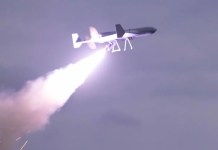The biggest threat for the US’ F-35 fighter program may not be the Russian S-400 missile system, but something much closer to home.
On Thursday, two Democratic Congressmen expressed their lack of support for increasing the number of F-35s in Biden’s budget unless the program overcomes its shortcomings.
The Lockheed Martin F-35 Lightning II is an American fifth-generation single-engine, all-weather stealth multirole fighter jet. Considered the most technologically advanced airplane ever built, it combines high-end stealth with unmatched situational awareness. Supported by advanced data capturing and a robust communication suite, it can conduct mission operations electronically.
However, despite its advanced stealth features, the American F-35 could be detected by the radars of the Russian S-400 air defense systems, according to some experts. This is believed to be one of the reasons why the US has slapped sanctions on its NATO ally Turkey for the latter’s S-400 deal with Russia.
Washington also indicated its displeasure after New Delhi had in October 2018 inked a deal with Moscow for the weapon system.
F-35 Hits US Congress Hurdles
Rep. Donald Norcross from New Jersey, who chairs the Armed Services Committee’s tactical air and land subcommittee, mentioned the unaffordability of the project which often goes beyond the allocated budget. He threatened to shift investment to a more affordable program.
Rep. John Garamendi from California, who leads the readiness subcommittee of the House Armed Services Committee (HASC), talked about how the program “fails to deliver on promised capabilities.”
Concurrently, the Department of Defense (DoD) announced a “strategic pause” on its efforts to develop its new logistical system, Operational Data Integrated Network (ODIN), for the F-35 program due to a lack of funding.
Even Republican lawmakers have raised their concerns about the program’s drawbacks. Last year, the US Congress agreed to 17 additional jets.
USAF Flagged Concerns Too
The change of attitude among lawmakers during the joint hearing of HASC’s readiness and tactical air subcommittees might be linked to Air Force chief of staff General Charles Q. Brown’s public admission on the program’s shortcoming in February.
Brown had tried to justify F-35’s low-level capabilities by comparing it to a Ferrari. He said the vehicle is a high-end device that cannot be used for everyday purposes.
This runs counter to what had been projected by DoD and Lockheed-Martin for years. They had described F-35 as an affordable, flexible, multi-role aircraft that can replace several older models such as the F-22 Raptor (despite lacking the high-end combat capabilities of the Raptor) and the A-10 Warthog.
But F-35 has not lived up to the hype and now Brown has suggested the replacement of the oldest F-16s in service with a (yet to be developed) less expensive non-stealthy advanced fourth-generation fighter jet rather than F-35s.
The F-35’s long laundry of problems includes logistical issues, pilot blackouts, spare parts shortages, premature part failures, software development disasters, gun use cracking the plane, and the need for frequent tanker support. The project constantly runs behind schedule with recurrent delays.
According to Extreme Tech, the F-35’s mission capable rate is 69%, below the mandated 80%. Only 36% of the F-35 fleet is available for any required mission, way below the required 50% standard.
US’ Costliest Weapons Program
What had been projected as the most affordable aircraft program has now become the world’s most expensive weapons platform because of the vast number of upgrades and enhancements it had to undergo over time. The Eurasian Times reported that flying the F-35 currently costs $36,000 per hour, and the lifetime cost might come up to $1.7 trillion.
A simulated war game last year aimed at a potential Chinese invasion of Taiwan pointed out the practical flaws of the F-35. The hypothetical air raid relied more on futuristic technologies rather than on F-35 jets.
Yet the F-35s are probably still better in comparison to its competition. The Russian Su-57 won’t have second-generation engines till 2022. The Eurasian Times had reported earlier that the Su-57’s stealth factor has been compromised by its design.
India has also questioned whether it should buy F-35s. The main issue will be compatibility and affordability. The F-35’s use of the most advanced radio communications equipment renders it incompatible with India’s Russian-origin communication suites. For its current operations, the Medium Multi-Role Combat Aircraft (MMRCA) is best suited for India.




